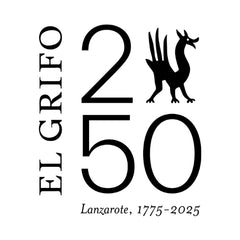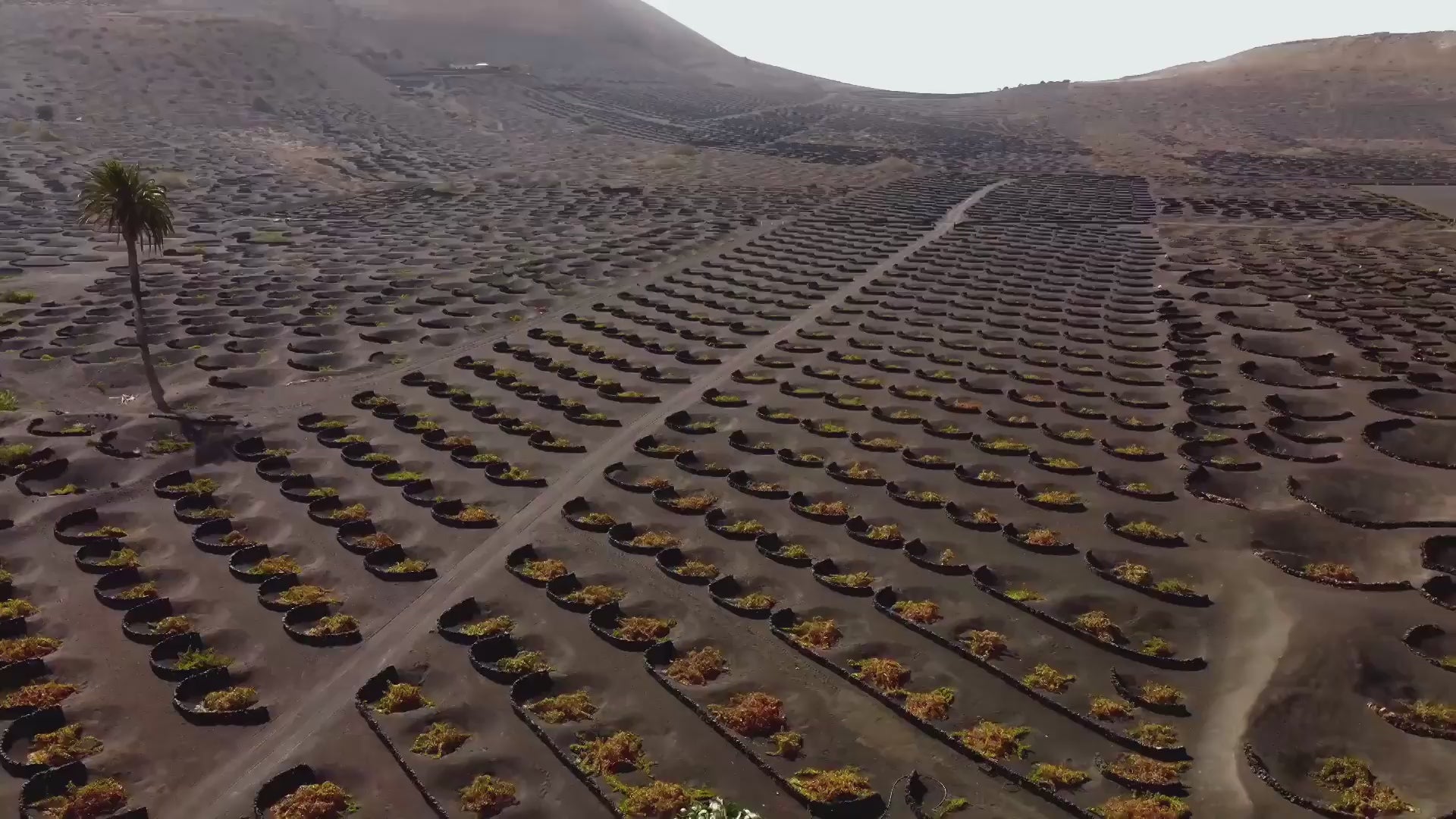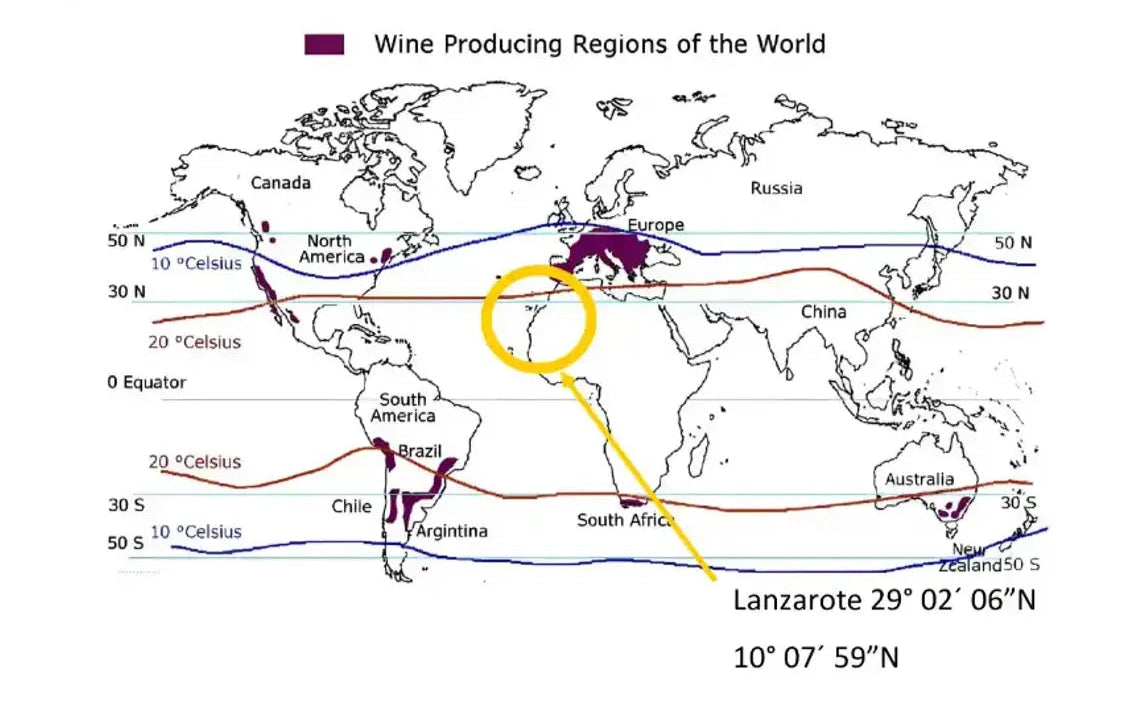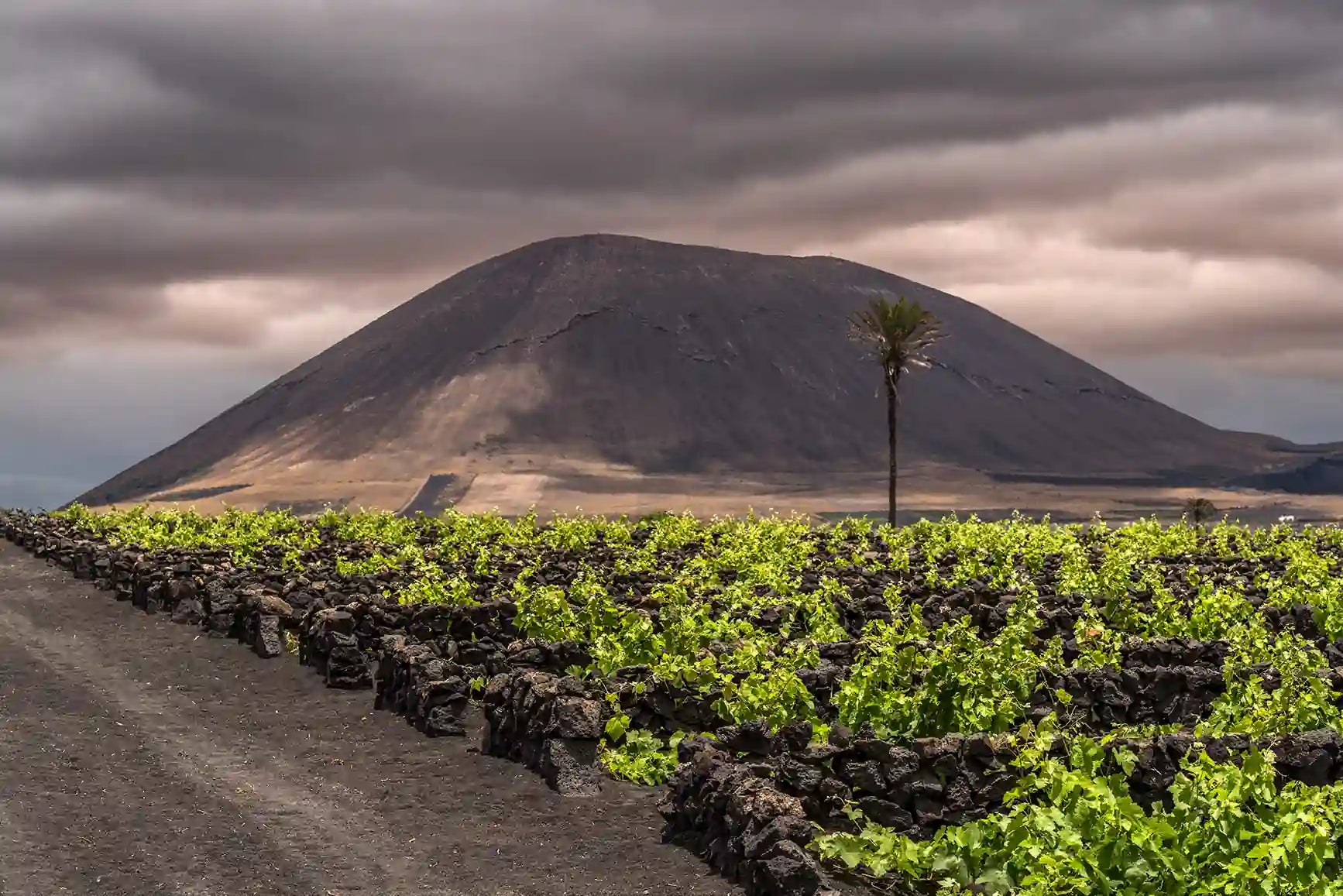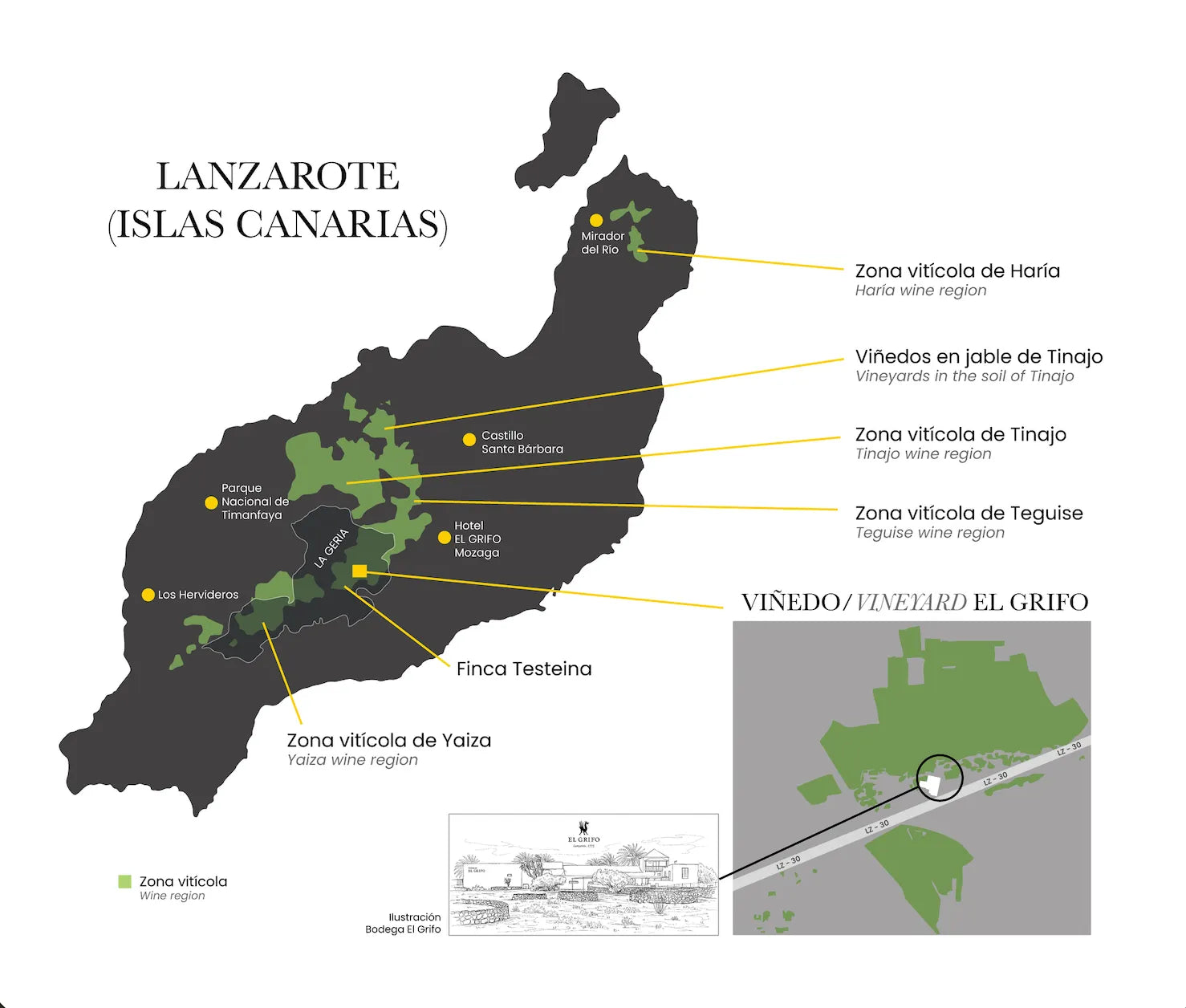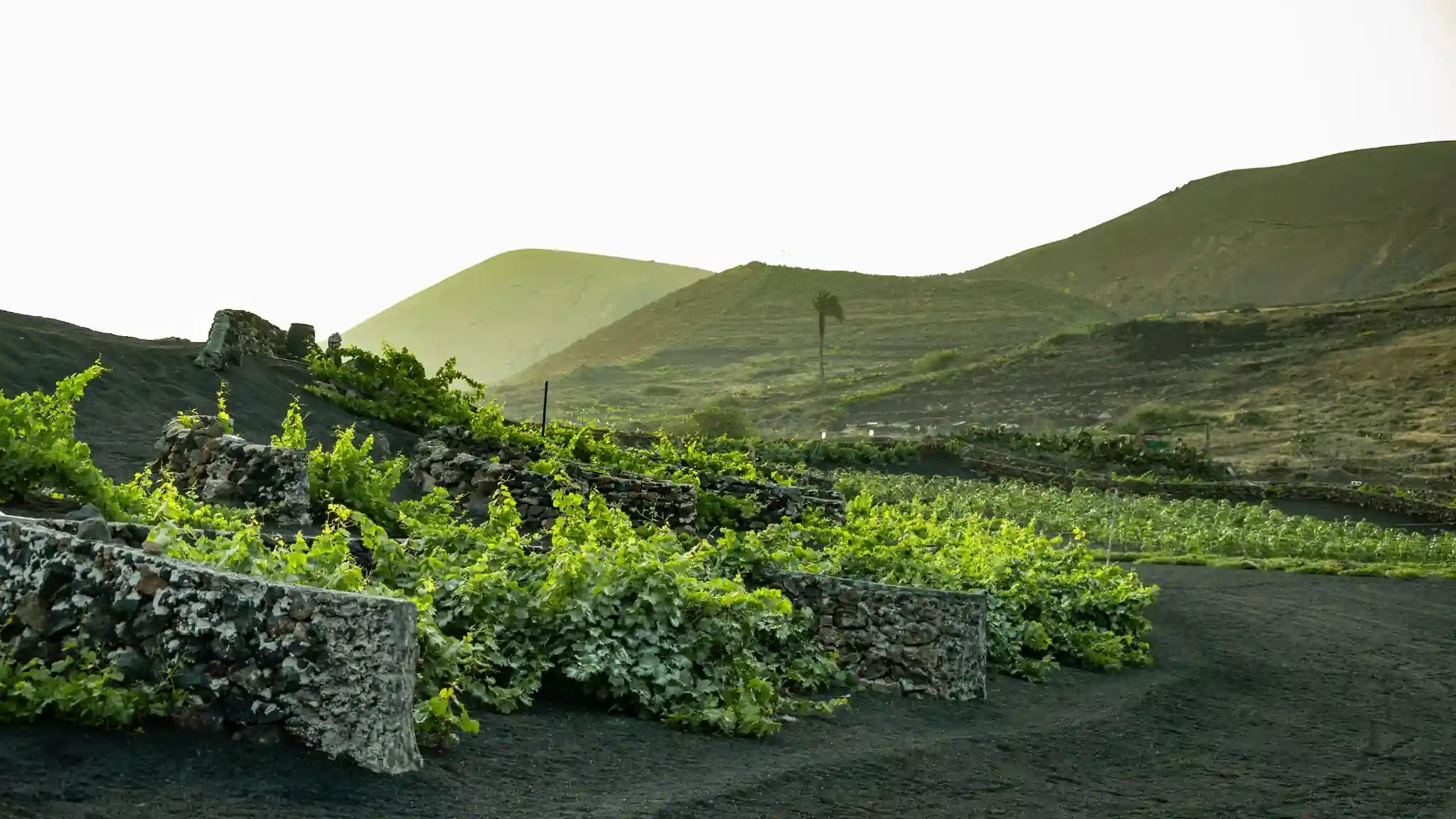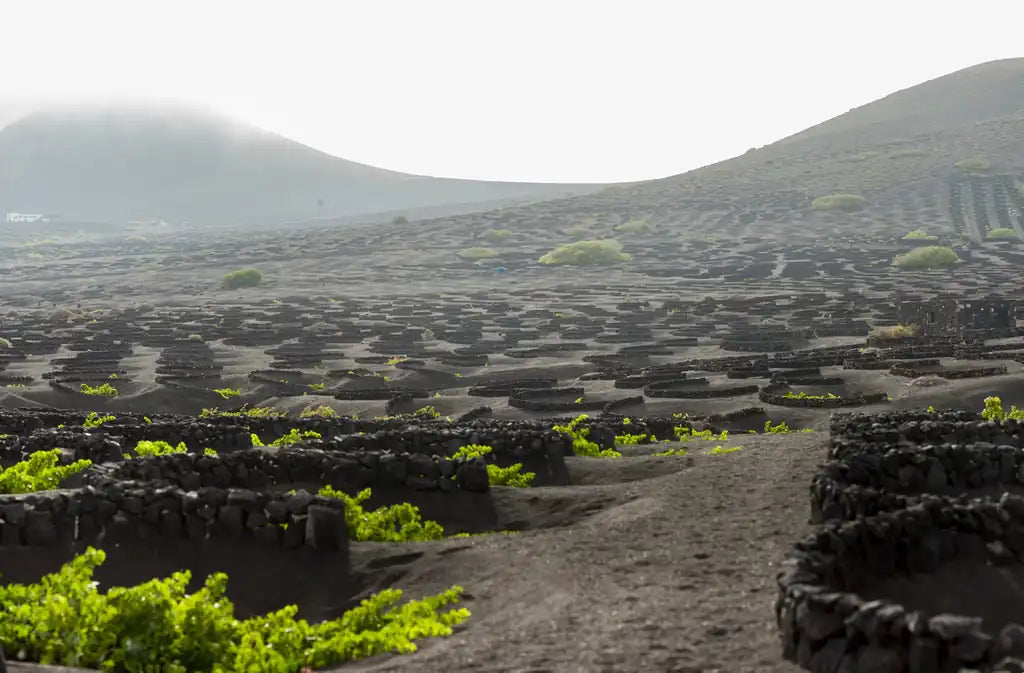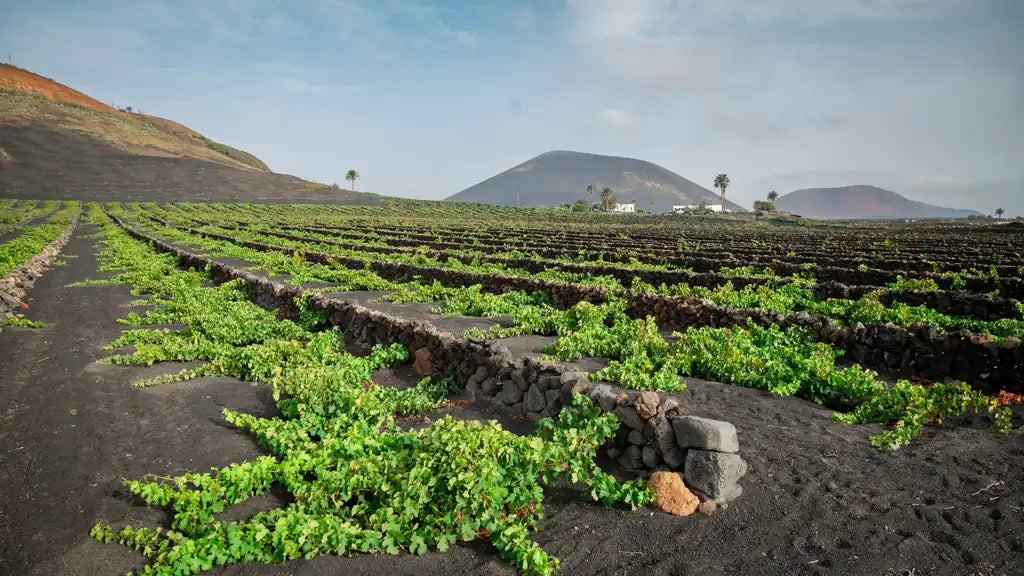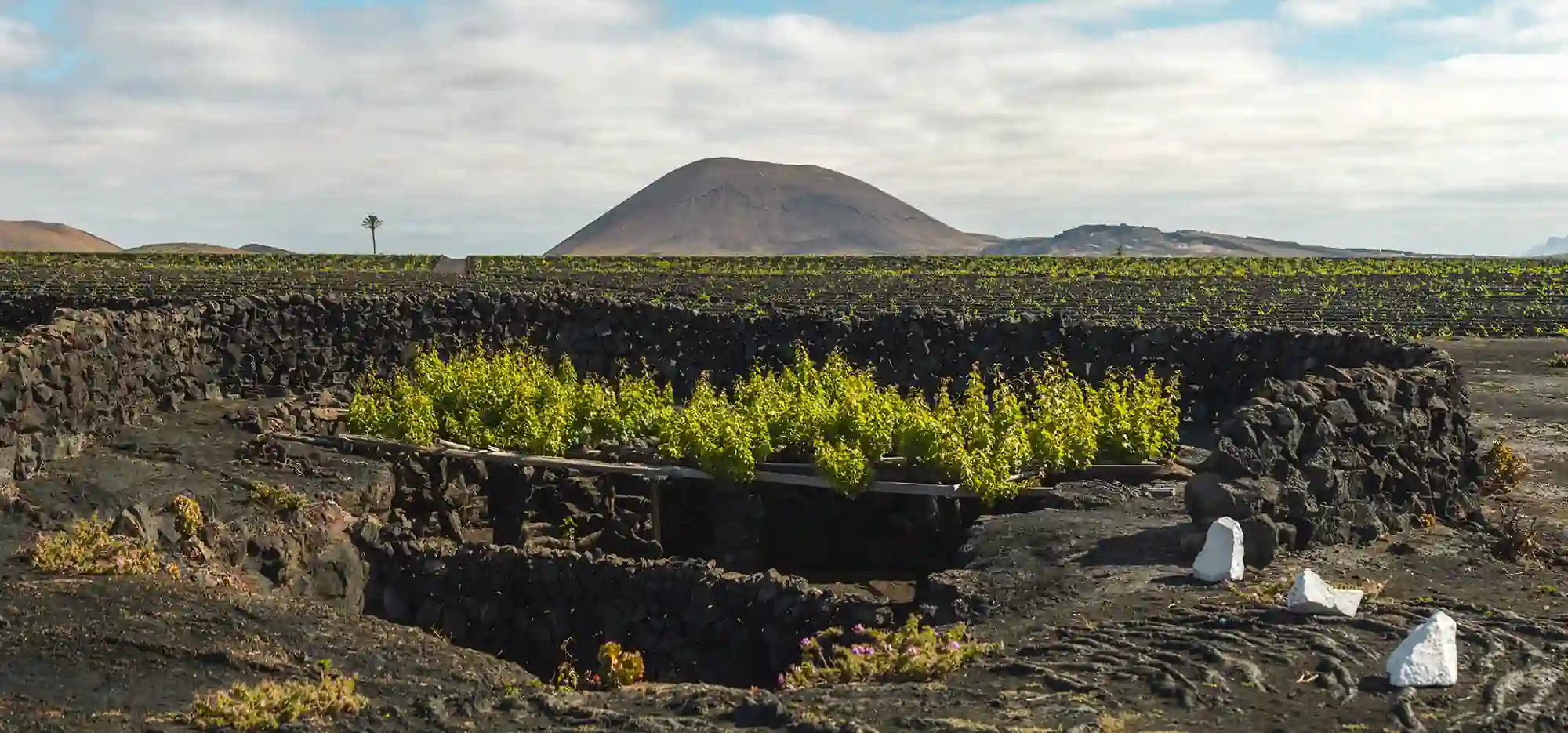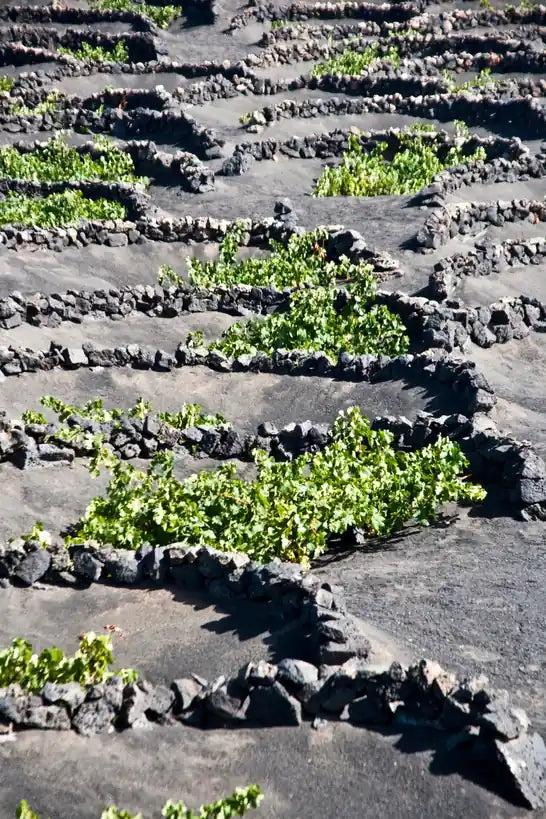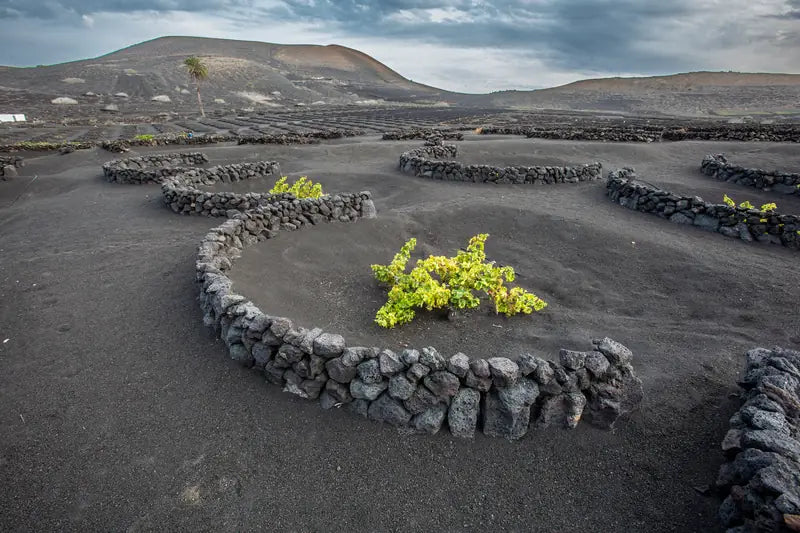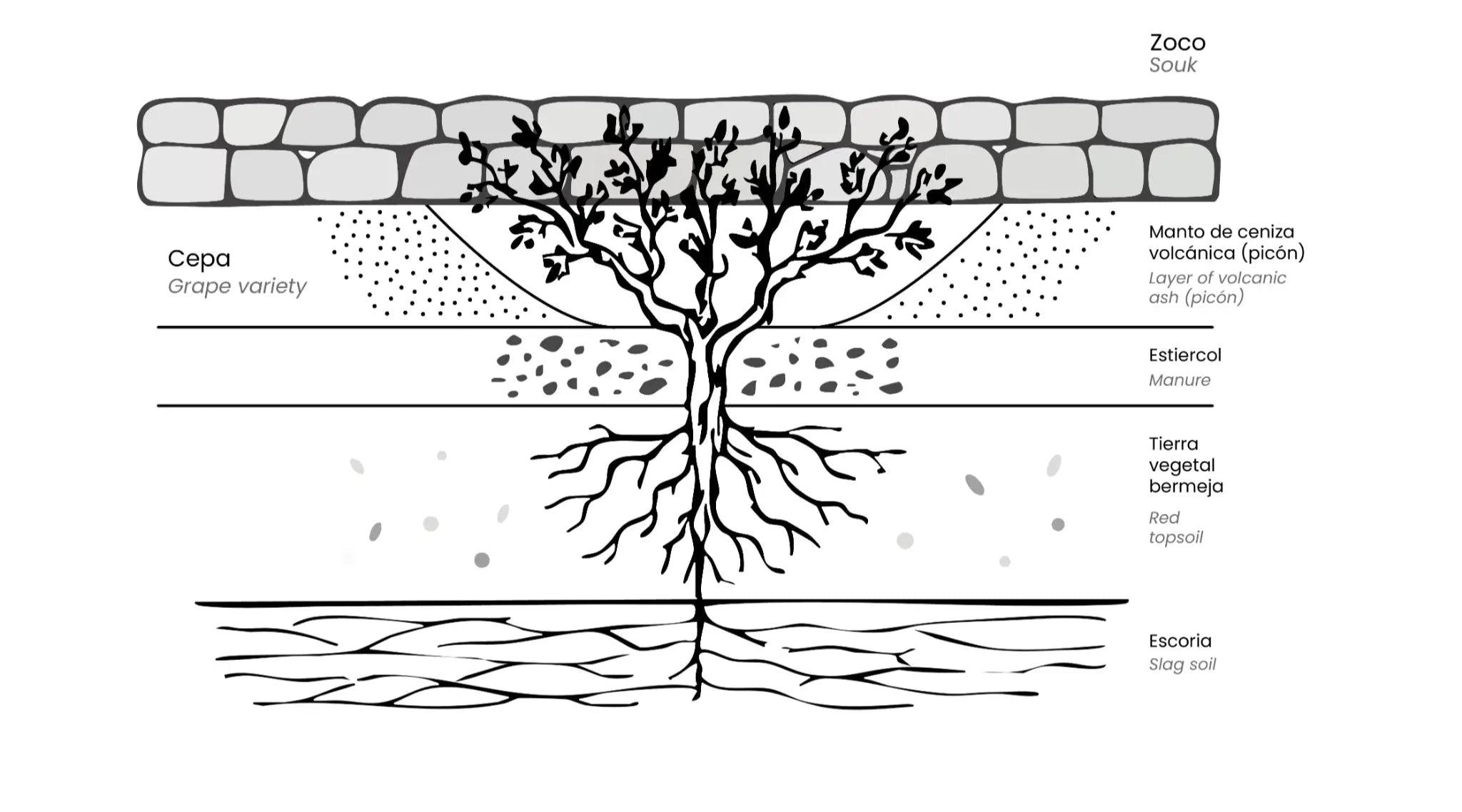Situated at 29º north, near the Tropic of Cancer, Lanzarote stands outside the traditional wine-growing belt. On the world’s wine map, its location is a true anomaly — and yet, this island boldly defies convention.
The climate that defines our wines
"In Lanzarote, the climate is not adverse, it simply does not exist."
Huetz de Lemps
Amid volcanic soil, scarce rain, constant trade winds and mild temperatures year-round, Lanzarote’s winegrowers have devised a cultivation system found nowhere else on Earth: vines planted in hollows carved into volcanic ash (picón), which captures humidity and shields the roots from the wind.
This union of tropical latitude, volcanic terrain and ancestral technique yields wines of unmistakable character — none more emblematic than Malvasía Volcánica, symbol of the Lanzarote's heroic viticulture.
This island shows that wine transcends geography — it thrives on passion, adaptation, and harmony with nature.
WINE REGIONS OF LANZAROTE
In the heart of Lanzarote, EL GRIFO tends 100 hectares of vineyards within La Geria’s Protected Landscape — a wine region unlike any other on Earth.
Volcanic ash ('picón' or 'rofe') blankets the soil, capturing precious moisture and shielding the roots from drought.
Each vine, planted by hand in its own hollow and protected by semicircular stone walls, stands as part of a landscape both striking and timeless.
Some of our vineyards belong to families linked to EL GRIFO for generations — a living reflection of a history shared between tradition and sustainability. Today, 50 hectares are organically certified, and the rest are following the same path through environmentally respectful viticulture.
Nestled between 250 and 462 meters above sea level, our vineyards unite volcanic soil, Atlantic winds, and centuries of know-how to craft wines of singular identity.
While our heart beats in La Geria, we work hand in hand with growers from Tinajo, Teguise, Haría, and Yaiza, preserving the agricultural diversity of Lanzarote.
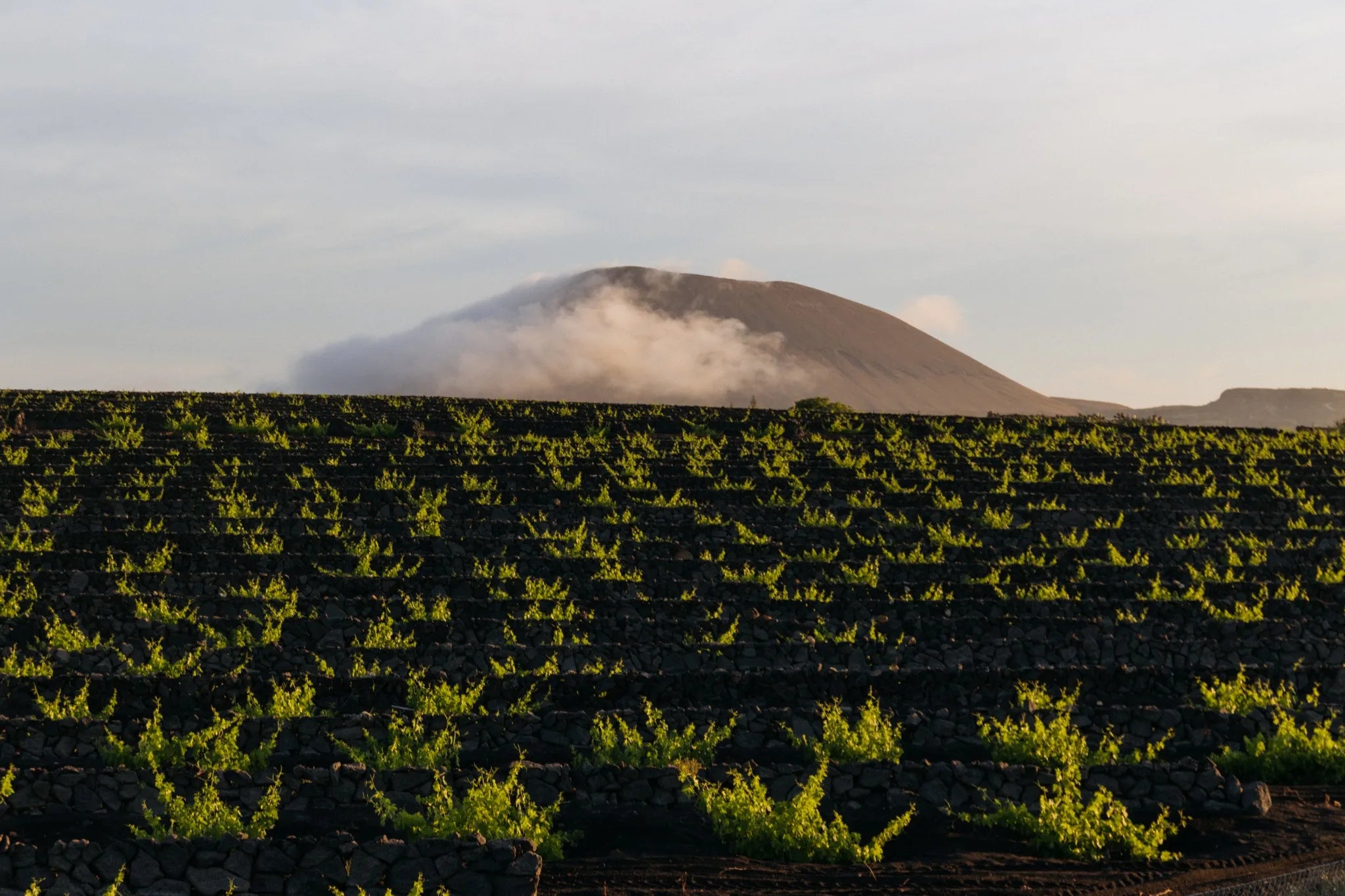
Through our research projects like Suelos Vivos (Living Soils), we embrace regenerative viticulture — nurturing biodiversity and helping vines thrive amid Lanzarote’s arid volcanic landscape. This is our vision of heroic viticulture: turning the volcano’s harshness into life, balance, and beauty.
CULTIVATION SYSTEMS
“In Lanzarote, I learned that beauty can also be arid, black, and rough — like a vineyard struggling against the lava.”
José Saramago
The characteristic stone pit (zoco) of La Geria
The zoco is one of Lanzarote’s most distinctive and emblematic cultivation systems — the very foundation of La Geria’s unique viticulture.
Each one is a hollow carved into picón (volcanic ash, also known as rofe), two to four meters wide, allowing access to the fertile soil below where the vine is planted. A semicircular wall of volcanic stone, facing north, protects the vine from the persistent trade winds — a simple yet ingenious response to life in a volcanic landscape.
An ingenious system born from the resilience of winegrowers after the 18th-century eruptions, it captures moisture, protects the roots, and makes sustainable cultivation possible in one of the planet’s most extreme environments.
An ancestral method that continues to give life to Lanzarote’s vineyards and to shape the very identity of our landscape.
The life cycle of the vine in Lanzarote
In Lanzarote, the vineyard lives through a cycle like no other —shaped by volcanic soil, Atlantic winds, and centuries of tradition. From the winter pruning and the clearing of the hollows to the tender budburst, flowering, and ripening, each task is done by hand, guided by patience and respect for the land.
The harvest, among the earliest in Europe, crowns the year: a time of shared effort and celebration that reflects the devotion of our growers. Then comes the quiet rhythm of post-harvest —a season to mend stone walls, nurture the soil, and ready the vines for the next cycle, preserving a system of cultivation that endures in the face of ash and wind.
THE VARIETALS
Nowhere else on Earth do vines grow as they do in Lanzarote. Amid a lunar landscape, between volcanic ash and stone walls that cradle each vine, grapes are born that challenge the impossible. The island has transformed scarcity into virtue: through the ingenuity of its winegrowers, it has nurtured unique varieties —shaped by wind, blazing sun, and the near absence of rain.
Each cluster is the fruit of a silent dialogue between extreme nature and human perseverance, giving rise to wines with identities as powerful as the land itself. From Malvasía Volcánica —Lanzarote’s signature grape— to Listán, Vijariego, and Syrah, every wine from La Geria bears the unmistakable character of a landscape found nowhere else on Earth.
